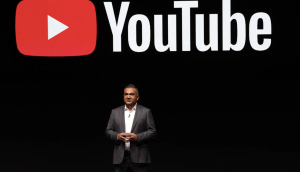As part of our annual year-end series, NYC-based trend-spotting guru Marian Salzman, formerly EVP/CMO of JWT Worldwide and now CMO at Porter Novelli, offers MiC readers some provocative thoughts on where we’ve been lately and where we’re likely headed.
MiC: What were some of the highlights of ’08, and how might they shape ’09?
The global economic crisis is triggering a wave of soul-searching that will spur many powerful people to action – hopefully concerted action. The coming year will be a time when what should happen will exert far more influence than usual on what actually does happen. We’ll need to recognize that polarization is a dead end, and replace it with a new civility.
2009 will be a year in which an emerging leadership style continues to develop, one with a centrist vision rather than left or right. The near-term imperative is for leaders to keep a cool head and chart a course people can trust and work toward. These leaders will need to transcend polarization, to be masters of resolving conflict. The leaders who accomplish these feats will go down in history as great men and women.
At Porter Novelli, we work to identify shifts in attitudes and values in brand and media preferences; 2008 has been unlike anything before it, and 2009 will again be unprecedented.
MiC: What do you see as the next big consumer trend?
A return to value and values.
Everyone will be using the words ‘value’ and ‘values’ in the months and years ahead. ‘Value’ is what people want and are willing to pay for, and price is how much they are asked to pay for it. Over the boom years, value increasingly came to mean lots more for the price – bigger, faster, brighter, more powerful, more features, more convenience, more choice, more prestige. It was a time of supersized expectations – although, ironically, consumer satisfaction didn’t rise at the same rate. The more consumers got for their money, the more demanding they became.
‘Values’ are the feelings that motivate people to act, and the criteria by which they judge actions. Values are what people feel is important in life.
Until the economic crisis, having more, doing more and being more were dominant values, not just in developed economies, but also in emerging economies such as Brazil, Russia, India and China.
In just a few months, the economic crisis has challenged the boom notions of value and values. As demand contracts and prices fall (as they have with gasoline and real estate), the links between value and price are broken. How can the same gallon of fuel cost $4 one month and $2 a few months later? As the crisis unfolds further, watch for individuals, communities and whole countries to re-examine the way they think about value.
In business, the emerging commercial reality is that cautious consumers seek a new kind of value when they spend. Value no longer means ‘as much as possible’ or ‘all you can eat.’ The greedy rise of ‘more’ has hit a ceiling. And now a fearful downward run of ‘less’ threatens to plunge to ‘none at all.’ In this anxious, uncertain environment, real value means ‘just enough to satisfy.’ It means meeting needs and having a sense of money well spent, not wasted. Listen for more vocal consumers: ‘I’m not paying for all those extra features, I just need the basics.’ First Lady-to-be Michelle Obama recently made a stylish case for modest spending behaviour when she appeared on The Tonight Show with Jay Leno wearing a J. Crew outfit she had bought online.
MiC: What do you see as the next big threat facing media agencies and media?
The difficulty of identifying, pricing and buying media brands within brands. The 21st-century media world blurs the lines between brand and content, and between big brands and the rest. Online, small individual brands and even people can create a presence that looks as good and performs as well as big, long-established brands – often better, in fact. To paraphrase New York Times journalist Thomas Friedman (who is becoming a brand in his own right), the online world is flat. Everyone and everything is just a click away. It costs nothing to jump from the site of a national media title to half a dozen smaller sites scattered around the world, whose content may trump the reporting or commentary of the larger, established old boy.
In the offline world, media titles are powerful aggregators. Consumers who want to read the work of Thomas Friedman buy a copy of the New York Times or one of his books. In the online world, a consumer who wants to read what Friedman has to say can check out the Times website, or just Google him. In the flat online world, media titles need to have a clear understanding of what they’re offering as brands and how they relate to the ‘sub-brands’ they feature. They need smart strategies to add value as ‘places’ where consumers find their favourite sub-brands. Only if they can add value will they be able to monetize sub-brands.























